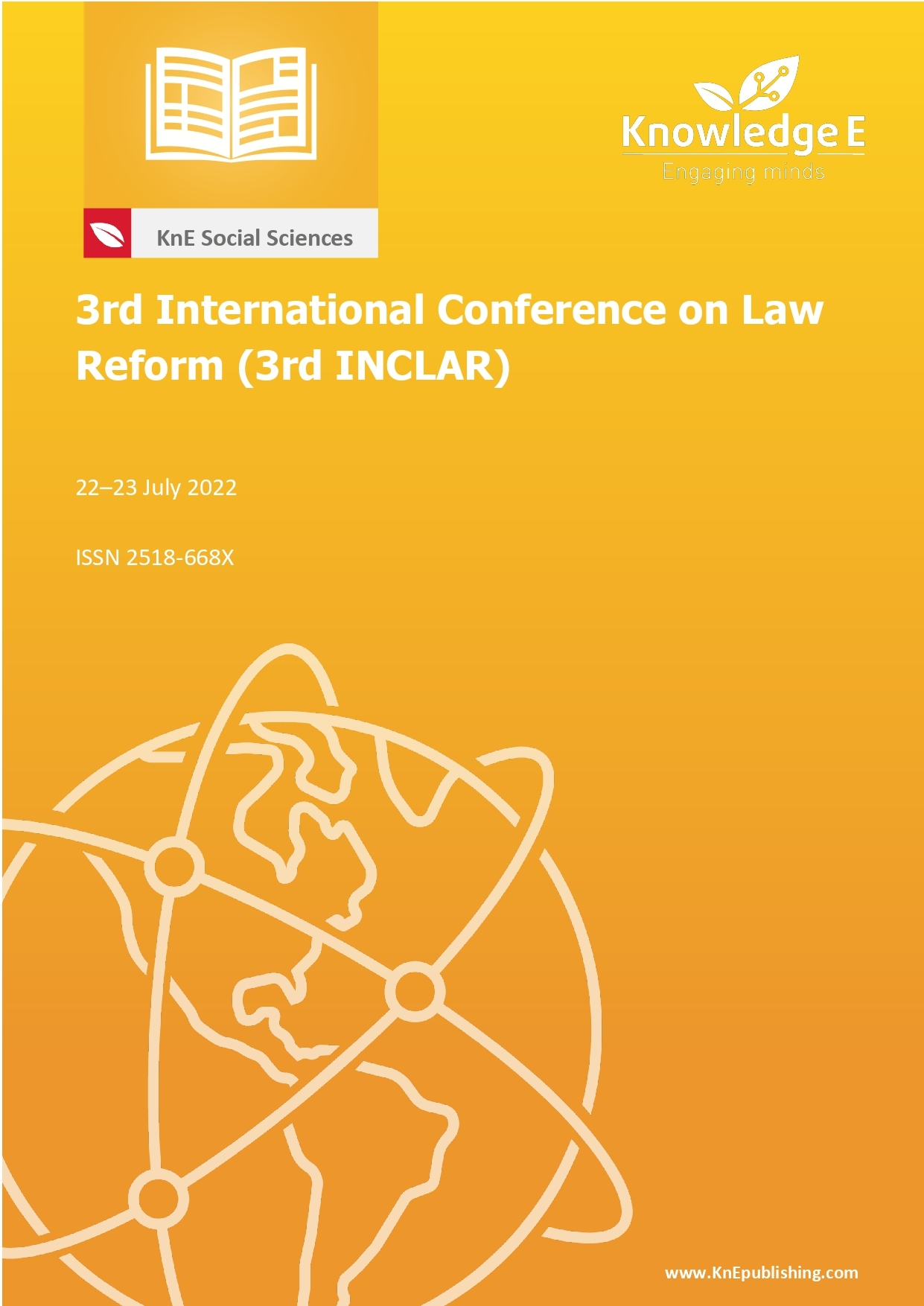Presidential Threshold in the Presidential Election from the Perspective of Constitutional Democracy and State of Law
DOI:
https://doi.org/10.18502/kss.v7i15.12112Abstract
Indonesia is a legal state, the state’s administration is based on the Constitution as the highest law. The constitutional rights of every citizen are guaranteed constitutionally in the 1945 Constitution of the Republic of Indonesia, as well as the right to run for president and vice president. Candidates for President and Vice President proposed by political parties or coalitions of political parties are constitutionally not regulated. The election law stipulates its requirements as an open law policy. Therefore, by using a normative juridical approach, it is necessary to examine the limits of the Presidential threshold as an open legal policy such as the principles contained in the 1945 Constitution of the Republic of Indonesia, namely democracy, human rights, the rule of law, and fair elections. The presidential threshold can be said to be against the principles of constitutional democracy because the constitution does not regulate it. The current election is held simultaneously, namely the legislative and presidential, and vice-presidential elections are held simultaneously. So, the Presidential threshold is no longer needed or should be removed. The results of the vote in the previous election were inappropriately used as the basis for Political Parties to nominate candidates for President and Vice President.
Keywords: presidential threshold, presidential election, constitutional democracy, state law
References
[2] Hadiwijoyo SS. Negara, Demokrasi dan Civil Society. Yogyakarta: Graha Ilmu; 2012.
[3] Harun Alrasyid, Pengisian Jabatan Presiden. jakarta: Pustaka Utama Grafiti, 1999.
[4] Haruni CW. “Constitutionality of Monitoring and Evaluation of Regional Regulation Drafts and Regional Regulations by Regional Representative Council,” Leg. J. Ilm. Huk., vol. 30(1), 2022.
[5] JDHID. Undang-Undang Nomor 7 Tahun. Tentang Pemilihan Umum; 2017.
[6] Fuqoha F. Pengisian Jabatan Presiden dan Presidential Threshold dalam Demokrasi Konstitusional di Indonesia. Ajudikasi J. Ilmu Huk. 2018;1(2):27–38.
[7] Marzuki PM. Legal Research. Jakarta: Kencana; 2007.
[8] Wibowo M. Menakar Konstitusionalitas sebuah Kebijakan Hukum Terbuka dalam Pengujian Undang-Undang. J. Konstitusi. 2016;12(2):196.
[9] Nyoman Serikat Putra Jaya. Politik Hukum. Semarang: Universitas Diponegoro; 2007.
[10] Ajie R. Batasan Pilihan Kebijakan Pembentuk Undang-Undang (Open Legal Policy) Dalam Pembentukan Peraturan Perundang-Undangan Berdasarkan Tafsir Putusan Mahkamah Konstitusi. Legis. Indones. 2016;13(02):111–20.
[11] Fuady M., Konsep Negara Demokrasi. jakarta: Refika Aditama, 2010.
[12] Ferinda K Fachri, “MK Kandaskan 6 Permohonan Uji Materi Aturan Presidential Threshold,” 2022. .
[13] Anggara V. Dinamika Presidential Threshold dalam Sistem Presidensial di Indonesia Dinamika Presidential Threshold dalam Sistem Presidensial di Indonesia. J. Transform. 2019;5(September):17–36.
[14] Nurul Huda. Hukum Partai Politik dan Pemilu di Indonesia. Bandung: Fokusmedia; 2018.
[15] Munir Fuady, Konsep Negara Demokrasi. jakarta: Refika Aditama, 2010.
[16] Mukhtarrija M, Handayani IG, Riwanto A. Inefektifitas Pengaturan Presidential Threshold Dalam Undang-Undang Nomor 7 Tahun 2017 Tentang Pemilihan Umum. J. Huk. Ius Quia Iustum. 2017;24(4):644–62.
[17] Gaffar JM. Demokrasi Dan Pemilu Di Indonesia. jakarta: Konstitusi Press, 2013.
[18] Nurhadi Sucahyo, “VOA.” .
[19] Hendra Nurcahyo, Filsafat Demokrasi. jakarta: Hukum Tata Negara Fakultas Hukum Universitas Indonesia, 2005.
[20] Gobel RT. Rekonseptualisasi Ambang Batas Pencalonan Presiden dan Wakil Presiden (Presidential Threshold) Dalam Pemilu Serentak. Jambura Law Rev. 2019;1(1):94–119.

